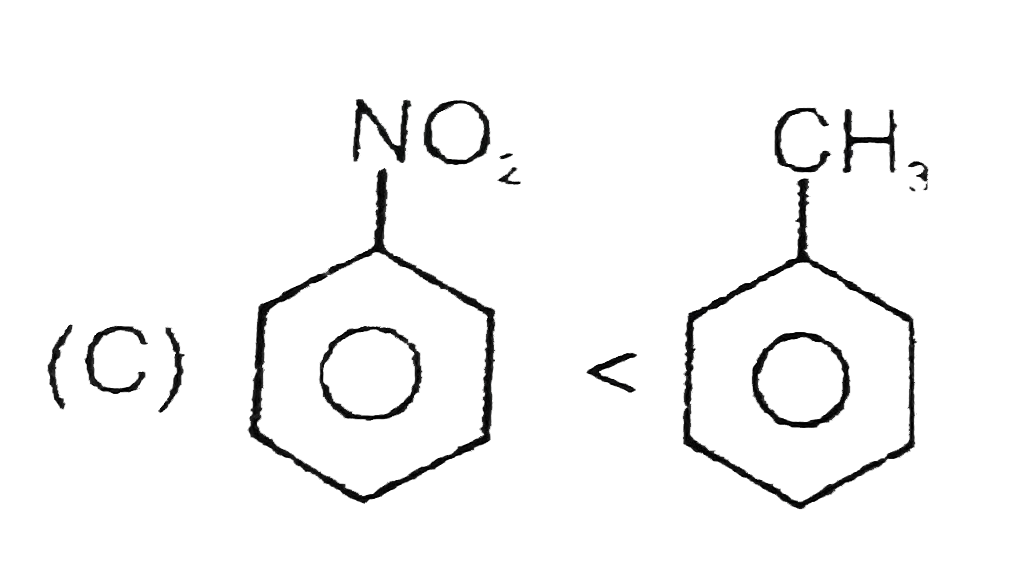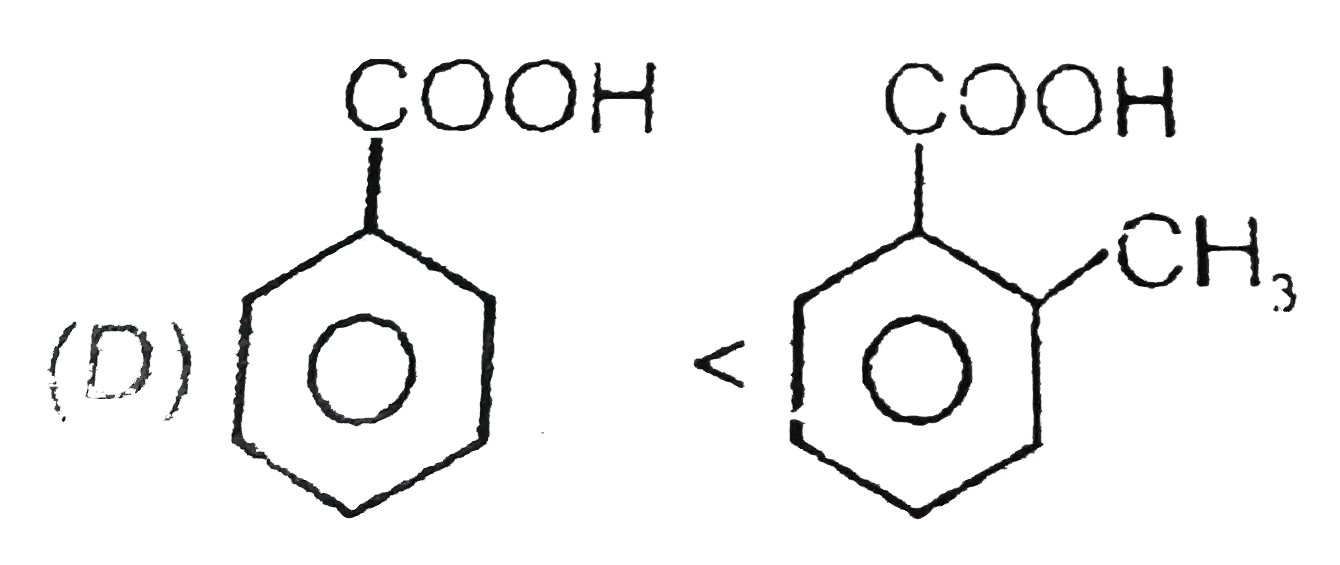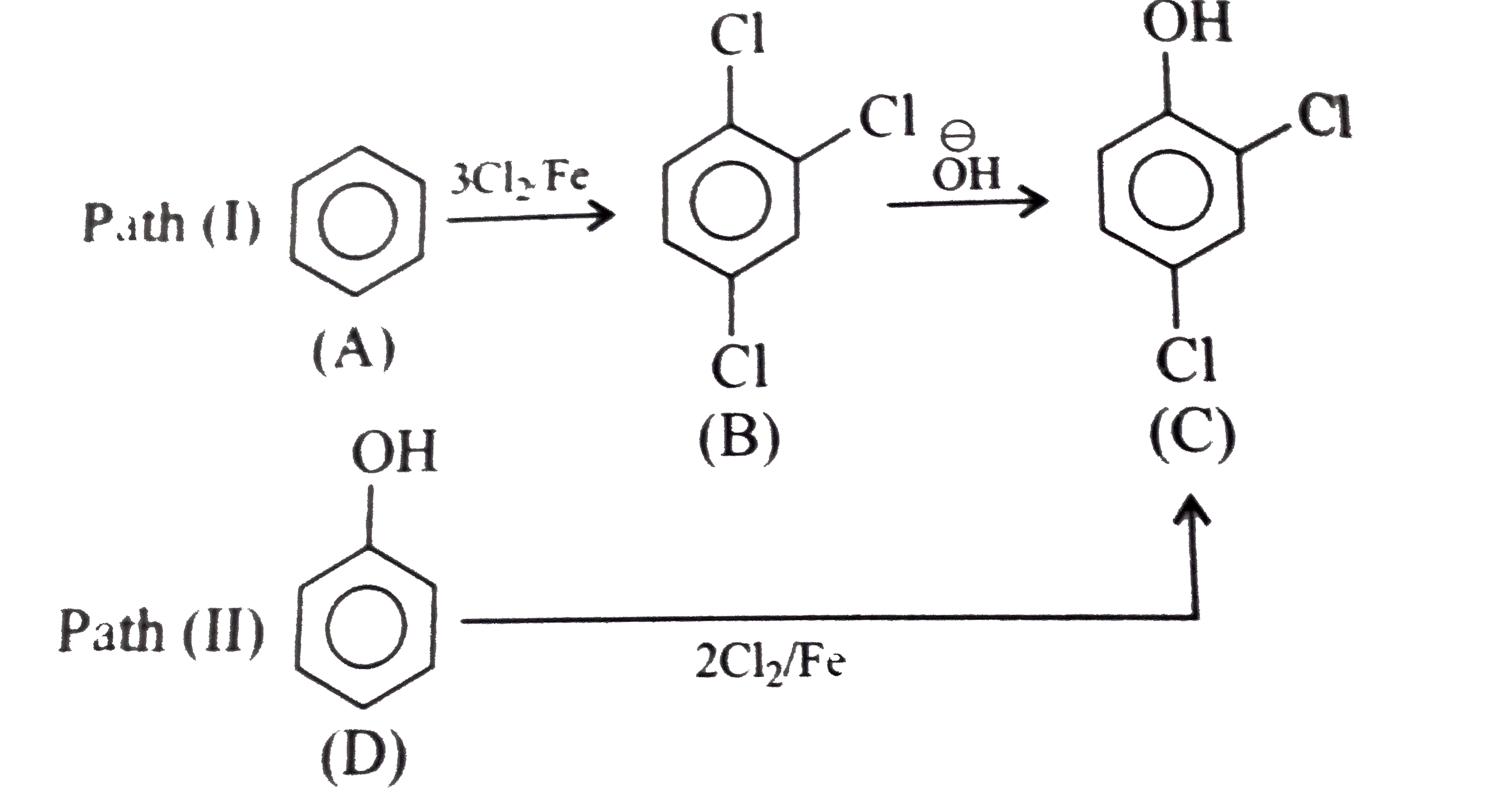Which is (are) correct out of the following:
CH2=CH2<H−C≡C−h (rate of electrophilic addition)
 <H3C−C≡C−CH3 (rate of catalytic hydrogenation)
<H3C−C≡C−CH3 (rate of catalytic hydrogenation)
 (rate of electrphilic substitution reaction)
(rate of electrphilic substitution reaction)
 (order of acidic strength)
(order of acidic strength)
The correct Answer is:B, C, D
To determine which statements are correct, let's analyze each one step by step.
Step 1: Evaluate the first statement
Statement: Ethylene is less reactive than ethyne towards electrophilic addition reactions.
Analysis:
- Alkenes (like ethylene) are generally more reactive than alkynes (like ethyne) in electrophilic addition reactions. This is because alkenes form a more stable intermediate during the reaction compared to alkynes, which form a highly strained and unstable intermediate.
- Conclusion: This statement is false.
Step 2: Evaluate the second statement
Statement: Cis-but-2-ene is less reactive than but-2-yne towards the rate of catalytic hydrogenation.
Analysis:
- In catalytic hydrogenation, alkynes are indeed more reactive than alkenes due to two main factors: lower steric hindrance and higher pi electron density in alkynes.
- Therefore, cis-but-2-ene (an alkene) is less reactive than but-2-yne (an alkyne) in this context.
- Conclusion: This statement is true.
Step 3: Evaluate the third statement
Statement: Nitrobenzene is less reactive than toluene for electrophilic substitution reactions.
Analysis:
- In electrophilic substitution reactions, the presence of electron-donating groups (like the methyl group in toluene) increases the electron density of the benzene ring, making it more reactive towards electrophiles.
- Conversely, the nitro group in nitrobenzene is an electron-withdrawing group, which decreases the electron density, making it less reactive than toluene.
- Conclusion: This statement is true.
Step 4: Evaluate the fourth statement
Statement: The ortho effect increases the acidity of benzoic acid when an ortho substituent is present.
Analysis:
- The ortho effect refers to the increased acidity of a carboxylic acid when an electron-donating group is present at the ortho position. This occurs because the substituent can stabilize the negative charge of the conjugate base through steric effects, making the acid more acidic.
- Conclusion: This statement is true.
Final Conclusion
The correct statements are B, C, and D.
Statement: Ethylene is less reactive than ethyne towards electrophilic addition reactions.
- Alkenes (like ethylene) are generally more reactive than alkynes (like ethyne) in electrophilic addition reactions. This is because alkenes form a more stable intermediate during the reaction compared to alkynes, which form a highly strained and unstable intermediate.
- Conclusion: This statement is false.
Statement: Cis-but-2-ene is less reactive than but-2-yne towards the rate of catalytic hydrogenation.
- In catalytic hydrogenation, alkynes are indeed more reactive than alkenes due to two main factors: lower steric hindrance and higher pi electron density in alkynes.
- Therefore, cis-but-2-ene (an alkene) is less reactive than but-2-yne (an alkyne) in this context.
- Conclusion: This statement is true.
Statement: Nitrobenzene is less reactive than toluene for electrophilic substitution reactions.
- In electrophilic substitution reactions, the presence of electron-donating groups (like the methyl group in toluene) increases the electron density of the benzene ring, making it more reactive towards electrophiles.
- Conversely, the nitro group in nitrobenzene is an electron-withdrawing group, which decreases the electron density, making it less reactive than toluene.
- Conclusion: This statement is true.
Statement: The ortho effect increases the acidity of benzoic acid when an ortho substituent is present.
- The ortho effect refers to the increased acidity of a carboxylic acid when an electron-donating group is present at the ortho position. This occurs because the substituent can stabilize the negative charge of the conjugate base through steric effects, making the acid more acidic.
- Conclusion: This statement is true.
The correct statements are B, C, and D.
Topper's Solved these Questions
- TEST PAPERSBOOK - RESONANCE ENGLISHCHAPTER - TEST PAPERSEXERCISE - PT-01
30 Videos
- TEST PAPERSBOOK - RESONANCE ENGLISHCHAPTER - TEST PAPERSEXERCISE - Pt-02
30 Videos
- TEST PAPERSBOOK - RESONANCE ENGLISHCHAPTER - TEST PAPERSEXERCISE - PART - III CHEMISTRY
20 Videos
- SURFACE CHEMISTRYBOOK - RESONANCE ENGLISHCHAPTER - SURFACE CHEMISTRYEXERCISE - Section - 5
1 Videos
- TEST SERIESBOOK - RESONANCE ENGLISHCHAPTER - TEST SERIESEXERCISE - CHEMISTRY
50 Videos
Similar Questions
Knowledge Check
Select the correct pair out of the following
AHypostomatic leaf-dicotsBepistomatic leaf-monocotsCamphistomatic leaf-free-floating hydrophytesDpresence of sunken stomata in leaf-submerged hydrophytesThe correct statement out of the following is :
AThe boiling point of the solution falls on increasing the amount of soluteBThe boiling point of solution increases on diluting the solutionCThe freezing point of the solution is raised on adding more of soluteDThe freezing point of the solution decreases on increasing the amount of solute.Select the correct statement out of the following.
AElectrostatic precipitators (ESPs) can remove over 99 % particulate matter present in the exhaust from a thermal power plant.BOver half of the e-wastes generated in developed countries are exported to developing countries, mainluy to China, India and Pakistan, where metals like Cu, Fe, Si Ni, etc., are recovered during recycling process.CUse of nuclear energy has two very serious inherent problems first is accidental leakage and the second is safe disposal of radioactive wastes.DAll of these.
Mark the correct statements out of the following:
View SolutionMark the correct option(s) out of the following:
View SolutionChoose the correct statement out of the following.
View SolutionChoose the correct statement out of the following.
View SolutionSelect the correct statement out of the following
View Solution

